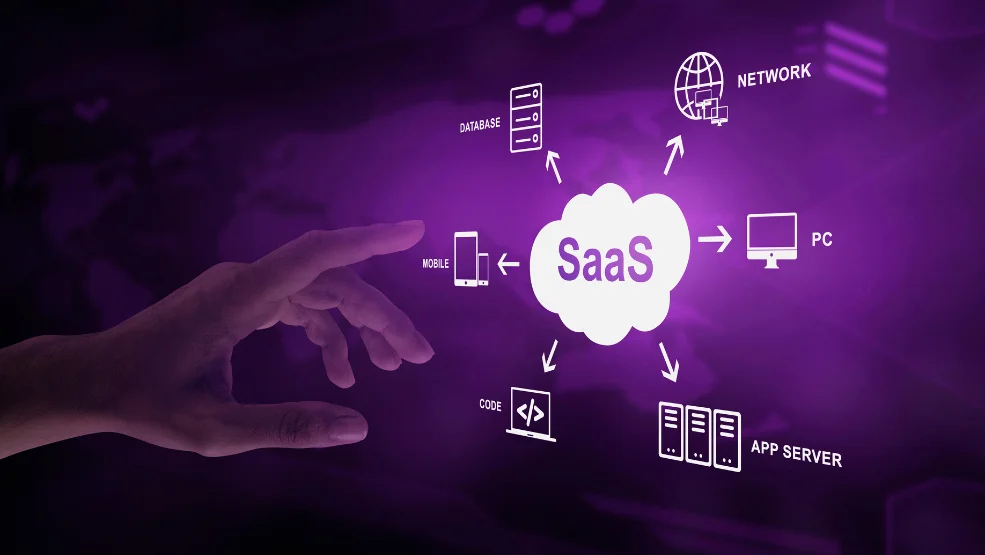Choosing between Software-as-a-Service (SaaS) and on-premise solutions still remains an age-old debate for field service organizations. Making the correct choice could significantly impact your business performance, field productivity, and customer satisfaction. As the cloud-based revolution continues, this decision becomes even more pivotal. This article will explore the nuanced differences and guide your field service business toward an informed choice.
Understanding SaaS and On-Premise
The field service management software landscape is evolving, and it’s crucial to understand the deployment options available:
SaaS
Software-as-a-service, often called SaaS, operates in the cloud and is accessible via the Internet. It offers rapid deployment, lower upfront costs, and the flexibility to scale as your business evolves. With a subscription-based pricing model, SaaS minimizes the initial financial burden, making it an attractive option for businesses aiming for cost-effective solutions.
On-Premise
On-premise solutions, on the other hand, reside on your in-house servers and are managed by your internal IT team. While requiring a more substantial upfront investment, this model provides greater control and customization options. It’s a path that demands a higher initial commitment but offers a tailored approach to meet specific business requirements.
Delving Deeper into Nuanced Differences
Total Cost of Ownership (TCO)
SaaS
SaaS models operate on a subscription basis, reducing upfront business costs. The responsibility for installation, integration, maintenance, and upgrades lies with the SaaS vendor. Moreover, SaaS solutions do not require on-site hardware or software setup, contributing to a lower Total Cost of Ownership (TCO) over time.
On-Premise
On-premise solutions demand a substantial upfront investment for purchasing and setting up hardware and software infrastructure. Although incremental fees may be lower, ongoing maintenance costs for in-house management and support can accumulate, impacting the overall TCO. Extensive support from the internal IT department may increase prices over time, particularly if specialized expertise is required.
Customization and Integrations
SaaS:
Opting for a Software-as-a-Service (SaaS) solution provides a swift and efficient avenue for deploying field service management software. The cloud-based nature of SaaS allows for rapid implementation, ensuring that your operations are up and running with minimal delay. However, this speed comes with a trade-off in terms of customization options. SaaS solutions typically offer a standardized set of features, limiting how much the software can be tailored to your specific needs.
Additionally, when it comes to integrations with other tools and systems, the responsibility largely falls on the shoulders of the vendor. While this streamlined process can save your internal IT team valuable time, it also means that you may have less control over the integration landscape. The challenge here is finding the right balance between the efficiency of rapid deployment and the necessity for tailored features and seamless integrations.
On-Premise
On the flip side, on-premise solutions present a playground of possibilities for customization and control. This deployment model offers the ability to fine-tune the software to meet the exact specifications of your business processes. The level of control over the system is unparalleled, allowing you to shape the software to align perfectly with your unique requirements.
However, this high level of customization comes at a cost. On-premise solutions demand a dedicated IT team to handle the ongoing maintenance and integration tasks. Your internal resources will need to invest time and effort into ensuring that the software remains aligned with your evolving business needs. The commitment required for this level of customization should be carefully weighed against the benefits it brings to your field service operations.
Security
SaaS:
Regarding data security, SaaS solutions alleviate the burden on your internal IT team. The vendor hosts the data on their secure servers, where robust security measures and continuous threat monitoring are implemented. This hands-off approach ensures that your sensitive information is safeguarded without placing the entire responsibility on your organization’s shoulders.
Additionally, failover capabilities in SaaS solutions contribute to robust data protection. These failover mechanisms minimize downtime in equipment failure or network issues, ensuring a seamless and secure user experience.
On-Premise
Security in on-premise solutions relies heavily on the expertise of your in-house IT team. While this provides a certain level of control, it also means that your organization is responsible for implementing and managing security measures within its infrastructure. The onus is on your internal team to stay vigilant against evolving threats, implement necessary updates, and respond to potential security incidents.
While on-premise solutions offer a more hands-on approach to security, they also require significant time, resources, and expertise to maintain a robust defense against potential threats.
Mobile Accessibility
SaaS
In the realm of mobile accessibility, SaaS solutions take the lead. Native mobile apps are readily available, ensuring your field technicians can seamlessly access the software from their smartphones or tablets. This instant accessibility enhances field productivity by providing real-time information and updates to those on the move. The advantage here lies in the convenience and immediacy of mobile access, allowing your field service team to stay connected and responsive to customer needs without additional development efforts.
On-Premise
With the on-premise front, mobile access may not be as straightforward. Achieving seamless accessibility for field technicians may require additional development efforts and integration work. This could slow down the deployment process and create a barrier to the swift adoption of mobile solutions for your field service operations. Balancing the need for mobility with the inherent challenges of on-premise deployment is crucial for organizations looking to empower their field teams with the latest mobile technologies.
Decision Criteria
1. Budget and Total Cost of Ownership (TCO)
Evaluate Upfront and Ongoing Costs: Begin by meticulously analyzing the upfront costs associated with both deployment models. Consider the initial investment and ongoing expenses such as maintenance, support, and potential scalability costs.
Long-Term Financial Impact: Look beyond the immediate budgetary considerations and assess the long-term financial impact. Compare the Total Cost of Ownership (TCO) for SaaS and on-premise solutions, factoring in all associated costs over an extended period.
2. IT Capabilities
Assess IT Team Capacity: Understand the capabilities of your internal IT team to manage on-premise maintenance. Consider your IT professionals’ expertise, workload, and bandwidth in handling the intricacies of in-house server management.
Weigh Control Benefits vs. Resource Demands: While on-premise solutions offer unparalleled control, balancing this against the resource demands placed on your IT team is essential. Determine whether the benefits of control align with your organization’s ability to allocate resources for ongoing maintenance.
3. Customization Needs
Prioritize Flexibility and Integrations: Identify the level of customization required for your field service management software. If your business demands high flexibility and integration with other tools, this criterion should weigh heavily in your decision-making.
Balance Against Cloud Efficiency: While customization is crucial, balance this need against the inherent efficiency of cloud-based solutions. Recognize that SaaS solutions may trade some customization for speed and ease of deployment, which might align with your operational requirements.
4. Security Requirements
Align Data Security Needs: Evaluate the specific security requirements of your business. Assess the robust security measures offered by SaaS vendors, including continuous threat monitoring and failover capabilities. Compare this to the capabilities of your internal IT team in managing and implementing security measures for on-premise solutions.
Tailored Approach to Safeguarding Information: Ensure that the chosen deployment model aligns with your organization’s need for a robust and tailored approach to safeguarding sensitive information.
5. Deployment Speed
Factor in Time-to-Market Requirements: Acknowledge the urgency of deploying your field service management software. Consider industry trends favoring cloud-based deployment and the agility it offers. Understand the importance of staying ahead in a rapidly evolving landscape and meeting time-to-market requirements.
Recognize Cloud-Based Efficiency: Cloud-based solutions, such as SaaS, are known for their faster deployment times. Consider how this efficiency aligns with your organization’s need to adapt to industry changes and meet customer expectations quickly.
Conclusion
Choosing between SaaS and on-premise for your field service management software is a pivotal decision that demands carefully evaluating your business needs, IT capabilities, and long-term goals. To streamline this decision-making process and unlock the full potential of your field service operations, consider exploring Zuper as your SaaS FSM platform. Tailored to meet the specific demands of field service management, Zuper offers a comprehensive solution that aligns with your objectives, ensuring efficiency, scalability, and customer satisfaction. Make an informed choice, and propel your field service business toward success with the right software deployment model.





